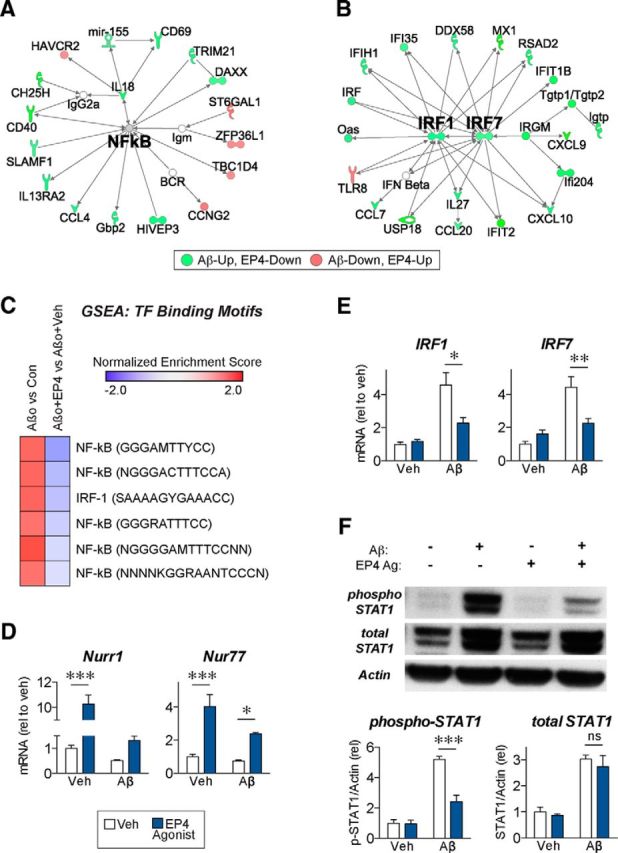Figure 4.

NF-κB and IRF pathways mediate the antagonistic effects of the EP4 receptor in microglial inflammatory responses to oligomeric Aβ42. A, B, Ingenuity Pathway Analysis was performed on the 116 Aβ42-responsive genes for which EP4 agonist treatment opposed the Aβ42 effect (fold change > 1.5 in Aβ42+EP4 agonist vs Aβ42+Veh comparison) in primary microglia cotreated for 6 h with oligomeric Aβ42 (10 μm) and/or the EP4 agonist AE1–329 (100 nm). Simplified diagrams of the two most significantly enriched pathways from these genes, centering on NF-κB and IRF1/IRF7, are displayed. C, GSEA for transcription factor (TF) binding motifs shows positive enrichment for NF-κB and IRF1 binding motifs in the Aβ42 vs Con comparison, and negative enrichment for the same sites in the Aβ42+EP4 agonist versus Aβ42+Veh comparison. D, qRT-PCR demonstrates that EP4 receptor stimulation increases expression of Nurr1 and Nur77, two nuclear receptors that repress NF-κB activity. E, qRT-PCR confirms that EP4 receptor stimulation attenuates expression of IRF1 and IRF7 in response to Aβ42. For each experiment, n = 3 microglia isolations from independent mouse cohorts. *p < 0.05 (Bonferroni multiple comparison test). **p < 0.01 (Bonferroni multiple comparison test). ***p < 0.001 (Bonferroni multiple comparison test). F, Western blot from BV2 microglial cells cotreated for 8 h with Aβ42- (10 μm) and/or the EP4 agonist AE1–329 (100 nm) demonstrates that Aβ42 increases both total and Tyr701-phosphorylated STAT1 levels, whereas EP4 agonist treatment attenuates phospho-STAT1 levels without altering total STAT1 protein level. n = 6 independent samples per group. ***p < 0.001 (Bonferroni multiple comparison test). ns, p > 0.05 (Bonferroni multiple comparison test).
